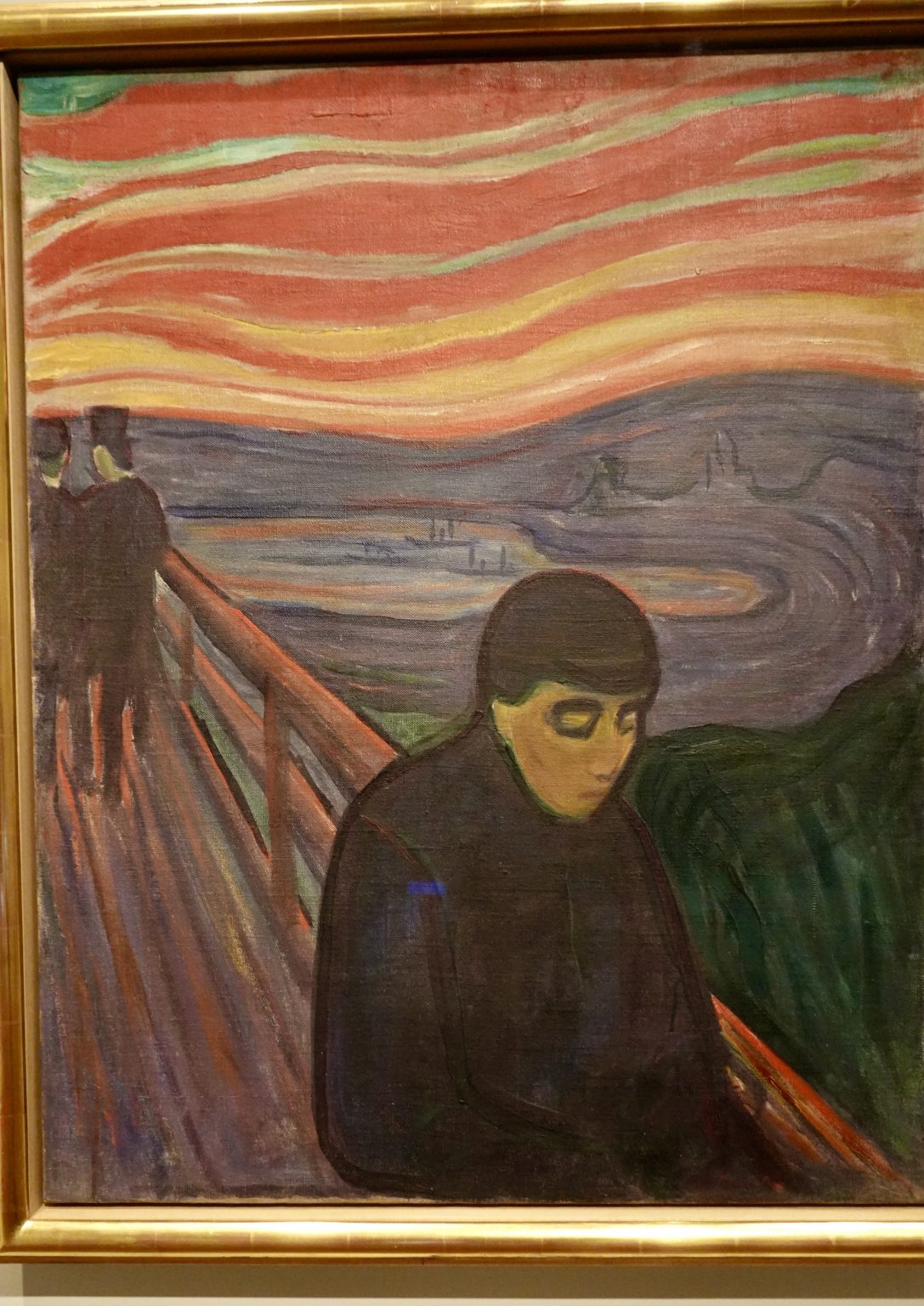Edvard Munch
June, 2023

Following our two weeks in Germany and Sweden, we flew into Oslo, Norway, one day early before the flight to join our Hurtigruten cruise around the Svalbard island chain. Upon the recommendation of my old friend Per (who is Norwegian but lives in Germany), we visited the new Oslo museum dedicated to Norwegian artist Edvard Munch. Wikipedia lists almost 1800 paintings by Munch.
Munch is generally best known for his painting, The Scream. Seeing that work in the context of the collection of his other paintings forever changed my perception of Munch’s works.

Actually, Munch created at least thirty different iterations of The Scream, some of which have been lost. Oslo’s Munch Museum owns three versions, shown below. The other extant iterations are displayed in museums around the world and in private collections. They vary from pencil drawings to colored versions. Munch even created variations on The Scream, including the similar work Despair, shown several photos below.

I will let the photos of his works speak for themselves. The museum took that very approach. It allows the viewer to come to their own conclusions about the artist’s intentions rather than attempting to offer interpretations by art critics, historians, and others. As the photos will show, Munch was not attempting to create perfect idealized images of his subjects. Instead, he showed the full range human conditions and emotions. His titles offered insights into his artistic intentions. But they could also create ambiguities, such as one of his most famous paintings known by its primary title, Madonna, referring to the Virgin Mary. However, his alternate title was “A Woman Who Has Just Made Love.”

Two floors of the Munch Museum display a variety of works. In one floor the works are groups by categories: love, death, pain, famous people, self-portraits. The second floor is a big open room displaying his largest works, including The Sun and Tower of Humanity. Personal headsets are available which offer narrated descriptions of various paintings in various languages. I highly recommend that any visitors to Oslo take advantage of the opportunity to visit the Munch Museum.












On the day following our one day in Oslo visiting the Munch Museum, we flew to Longyearbyen, Spitsbergen, the northernmost city in the world, located in the Svalbard islands. I will write a complete blog about Svalbard at the conclusion of our week-long Hurtigrutin cruise around the islands. But as a teaser, here are some of the photos taken from the plane as we descended over the islands prior to landing in Longyearbyen.






0 Comments on Edvard Munch
Join the Conversation